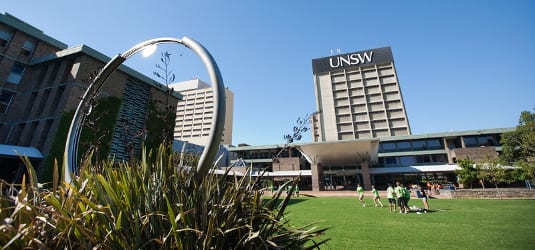Martin Green, Australia’s world leading solar PV researcher, says the cost of solar PV technology will halve again in the next decade, meaning it will become the cheapest of all technologies and help radically transform the world’s energy systems.
Green says it seems clear that solar PV will be the cheapest form of electricity across the world by 2030, and that solar – as predicted by the International Energy Agency – will become the single biggest energy source by 2050.

“The costs of solar will halve again by 2025 is my prediction,” he told a conference in Sydney on Wednesday. “We are at 60c per watt manufacturing now but we will get down to 30c/watt some time before 2025.
“What will happen now, and we are starting to see it already, is that the world’s energy systems will start to evolve to adapt to this new technology.”
Green’s comments come as the Abbott government, and the coal industry, insist that coal-fired generation will continue to dominate energy systems “for decades to come”.
Green, however, says coal will not match solar on costs, particularly if it has to – as it needs to – curb its Co2 emissions. (Green and his team at University of New South Wales have led the world in silicon cell efficiency since 1983, paving the way for the solar panels we now put on our homes. It is because of this work he was dubbed “the father of photovoltaics”).
Green noted that a study completed in Germany a decade ago predicted that solar PV would provide at least 25 per cent of global final energy demand by 2050 (that includes all energy and not just electricity).
“It was a very bold projection,” he said. It now looks like that prediction will be exceeded. Solar’s level of deployment is 7 years ahead of forecast, and the cost of solar PV has been reduced 7-fold since 2008, far quicker than expected.
“Things that seemed impossible so far in the future are now doable and feasible,” Green said. “And that is not generally recognized,” he said.
Green says cost reductions will come just through gains in manufacturing techniques, and also by improvements in technology.
“This technology is steadily evolving. Each year there is an announcement of an efficiency improvement. But there is also a very robust technology pipeline.”
Commercial module efficiency will likely double from its current level of 15-21 per cent. Indeed, Green told the conference that his own research team at UNSW is currently in the process of confirming a new cell lens efficiency record of more than 40 per cent.

Green said it was wrong to assume that coal needed to remain the dominant energy source, or that the current nervy system built around “base load” and “peaking” plants would be the design of the future. It was not, he said, as efficient as people believed.
“The baseload argument tends to get a big distorted. Having constant power supply is a bit of a problem,” he said.
Green pointed to Japan, where the government had to build the highest amount of series of pumped hydro in the world to absorb excess nuclear energy, in much the same way that Victoria introduced off-peak electric hot water to absorb the excess from its brown coal generators.
In Belgium, he added, the highways are the best lit in the world, because there is nothing else for nuclear to do at night. “Over the last century we have worked to fill in night time demand. Now we have to unravel all that and work to fill daytime demand.”
So, will coal remain primary source in decades to come?
“I can’t see CCS working – there are too many issues and it is too expensive. We are talking about PV producing electricity at a lower cost than present coal, not coal plus sequestration. I can’t see that taking off.”
And what about coal continuing without carbon abatement?
“You need to stop that happening. And I think that will become the universally held view over the coming decade.”








